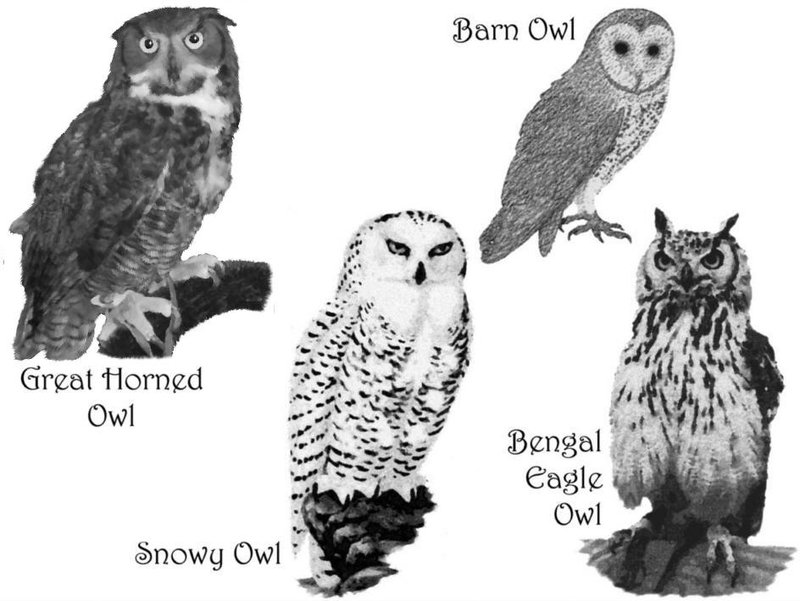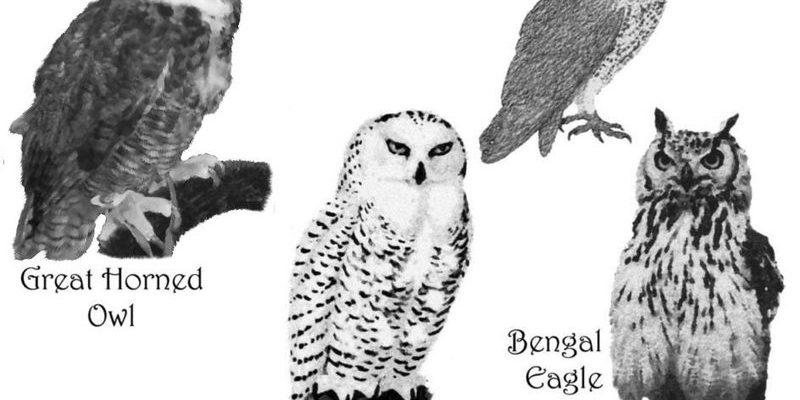
The story of the Great Horned Owl goes back thousands of years. It’s like a long novel, filled with adventure and intrigue. These birds have adapted and evolved, fitting into various environments across North America. It’s a tale of survival, hunting strategies, and even their cultural significance to many civilizations. So, let’s take a journey through time and discover how this remarkable owl has transformed and what makes it so special.
Understanding the Great Horned Owl
The Great Horned Owl, known scientifically as *Bubo virginianus*, is a large bird of prey distinguished by its impressive size and striking features. Adults typically measure 18 to 25 inches in length, with a wingspan that can reach up to 5 feet. Often, their mottled brown and gray feathers provide excellent camouflage against tree bark, making them adept hunters during the night.
These owls possess powerful talons and a sharp beak that help them capture a diverse range of prey, including rabbits, rodents, and even other birds. Honestly, their adaptability to various habitats—from forests and deserts to urban areas—makes them one of the most versatile owls. So, whether you’re in the heart of the city or out in the wild, there’s a chance you might spot this magnificent creature.
The Evolution of the Great Horned Owl
The evolutionary history of the Great Horned Owl stretches back millions of years. Scientists believe that owls, in general, first appeared around 60 million years ago, shortly after the dinosaurs went extinct. Talk about making a comeback! The lineage of the Great Horned Owl diverged from other owls, adapting uniquely to its environment and food sources over time.
One key aspect of their evolution is their nocturnal lifestyle. Developing enhanced night vision and the ability to hear high-frequency sounds allowed them to hunt effectively in low-light conditions. Their unique feather structure also permits silent flight, making them stealthy predators. Imagine sneaking up on your dinner without making a sound—that’s the Great Horned Owl for you!
Habitat and Distribution
Great Horned Owls are incredibly adaptable, which is a huge plus for their survival. They inhabit various regions across North America, from Canada to the southern United States and even into Central and South America. They thrive in forests, grasslands, deserts, and even suburban areas, often taking over abandoned nests or creating homes in tree cavities.
You might be wondering how these owls manage such a broad distribution. Their adaptability plays a crucial role. They can live in diverse environments and withstand different climates, from the icy north to the balmy south. This flexibility is vital for hunting and nesting, allowing them to find food and shelter in a variety of settings.
Diet and Hunting Techniques
So, what do Great Horned Owls eat? The answer is quite a bit! They are opportunistic feeders, meaning they’ll eat whatever is available. Their diet primarily consists of small mammals like rabbits, rats, and squirrels, but they won’t shy away from birds, reptiles, and even insects. Here’s the thing: their hunting technique is just as fascinating as their diet.
With exceptional night vision, these owls can spot prey from great distances. They use their powerful talons to swoop down silently, catching their victims off guard. This hunting prowess is enhanced by their ability to hear the faintest sounds, making them fearsome nocturnal predators. You can imagine it like a well-executed stealth mission, where every detail counts for success.
Reproduction and Lifespan
When it comes to reproduction, Great Horned Owls are pretty interesting. They typically breed in late winter to early spring, with females laying 2 to 5 eggs. What’s remarkable is that both parents participate in raising the young. The female incubates the eggs for about 30 to 37 days, while the male hunts for food, ensuring the whole family is well-fed.
Once the eggs hatch, the owlets are born helpless and depend on their parents for survival. It takes several months before they can fly and hunt on their own. As for lifespan, in the wild, Great Horned Owls can live up to 10 years, while some have been known to survive over 30 years in captivity. That’s a long time to be a dominant predator!
Cultural Significance
Throughout history, Great Horned Owls have held a prominent place in many cultures. For Native American tribes, these owls were often seen as symbols of wisdom and protection. Some believed that seeing a Great Horned Owl was an omen, either good or bad, depending on local traditions.
In literature and art, these owls have also made an appearance, often depicted as wise characters or guardians of the night. Their haunting calls and mysterious nature make them a popular subject in stories and folklore. It’s as if they’ve woven themselves into the very fabric of human imagination, serving as a reminder of the wildness that exists just outside our doors.
Conservation and Protection
As with many species, habitat loss and changing climates pose challenges for Great Horned Owls. Fortunately, these birds are considered to be of “least concern” by the International Union for Conservation of Nature (IUCN), meaning they are not currently at immediate risk of extinction. However, protecting their habitats remains vital for their continued survival.
Conservation efforts focus on preserving natural habitats and educating the public about the importance of these incredible birds. Understanding their role in the ecosystem is essential—after all, a balanced ecosystem relies on predators like the Great Horned Owl to control populations of small mammals. When we protect them, we ultimately protect the environment we all share.
In conclusion, the evolution and history of the Great Horned Owl reveal a fascinating story of adaptability, resilience, and beauty. From their impressive hunting techniques to their rich cultural significance, these owls are more than just creatures of the night. They remind us of the wonders of nature and the importance of preserving our wildlife for future generations. So, the next time you hear their haunting calls, take a moment to appreciate the incredible journey that has brought them to us today.

